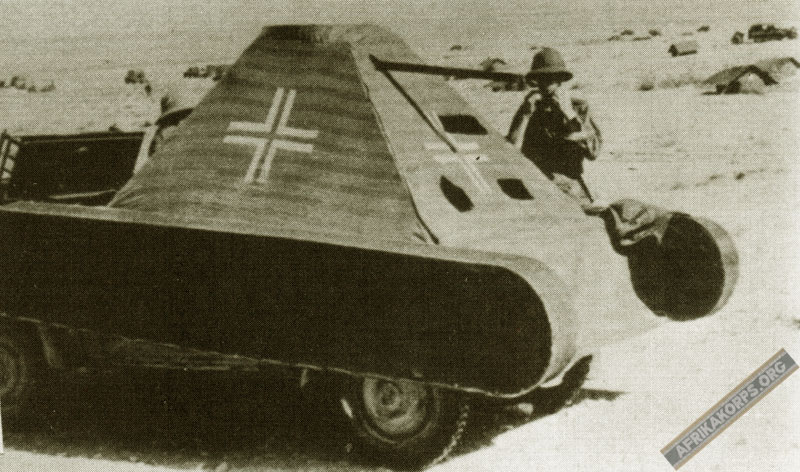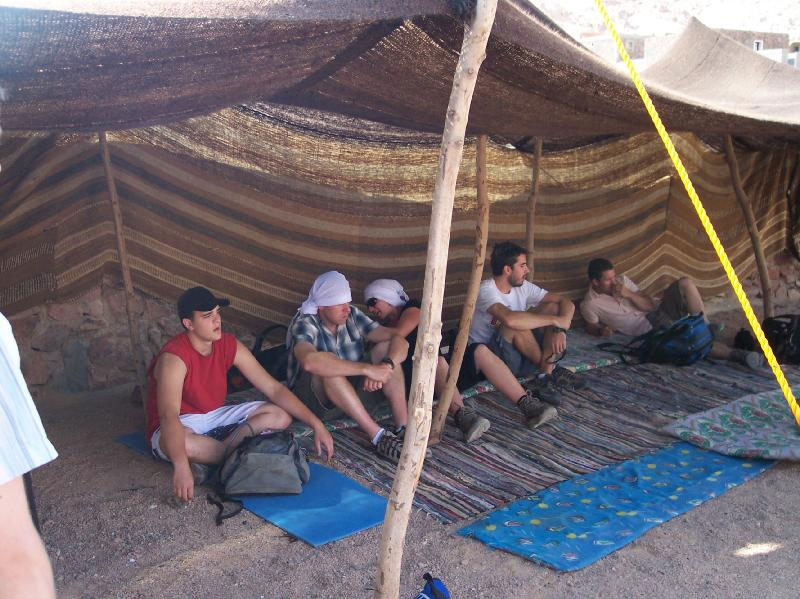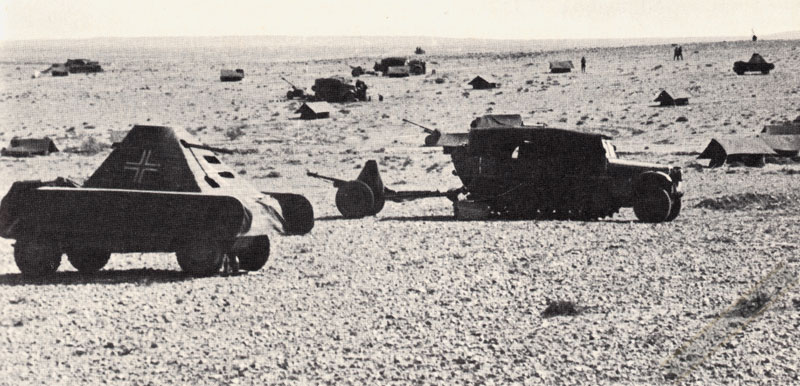The version built by Rommel's 'Special' workshop southwest of Tobruk and used for "Ruse or Deception" in North Africa is very different than the Panzer Atrappe in it being constructed of painted 'cloth' covered wood. This type vehicle was often used to raise as much dust and noise as possible!!! It often had cans and other noise making or drug behind items attached with chains. You might just be able to see some cans under the front of the "Ruse" Kubel in the photo below. This is what I have termed this vehicle type!!! Rommel's "Ruse" Kübelwagen

Let me share this offering... this is a "Dummy" from NeoGrade (Korean Resin Manufacturer)
http://www.neograde.net/index.php







The "Dummy" Kübelwagen conversion from NeoGrade is less than $20 plus shipping... CHEAP!
The website is only in Korean with a bit of English thrown in to have search engines locate the website.
Sorry but this "Dummy" conversion is NEW to me as they seem to have added this conversion since I might have shared their add-ons for the Sd.Kfz.7 with other colleagues here.
NeoGrade modelers painted the Kübelwagen as if they had used Bedouin cloth which was this brown with tan stripes but the Germans used a waterproofing solution over this that was black colored. Therefore should look more black but the tan or light colored stripes show in some photographs... the Germans acquired 'bolts' of this cloth to make their 'Dummy" Kubels!
Bedhouin Tent cloth is not really cloth but woven from goat hair or sheep wool by the tribes women from their nomadic travelling companion animals collected hair (they are not made from camel hair)!!! These women also make or weave nice woven cotton products but this is not what is used for tents...

Read more here about bedhouin Tents here: http://www.saudiaramcoworld.com/issue/1 ... k.tent.htm
The Black Tent Written by Daniel Da Cruz http://www.saudiaramcoworld.com/issue/1 ... k.tent.htm
In the cities of Saudi Arabia today, as in most cities of the Middle East, the skylines are changing. Up from the low clusters of dwellings and shops rise the strong shapes of modern concrete apartment buildings, office buildings, government buildings—dramatic symbols of change in a land where a more traditional shelter was the famous "black tent."
Possibly because of Hollywood films, bad novels and inaccurate articles, the Western world long thought of—and may still, even in 1966—the Arab world in terms of black tents, without either appreciating the virtues of the life symbolized by the black tent or realizing that in Saudi Arabia, and most places in the Middle East, the black tent is little more than a remnant of a past that has given way to the needs of the present.
Years ago, in the sands of Arabia, there was no more welcome sight to the weary traveler than a black tent on the horizon. Whether it belonged to a friend, a stranger, or even an enemy, a traveler knew that he could claim from its Bedouin owner three days of hospitality. That was the way of the desert and its fame spread all over the world. The black tent became, for many, a symbol of Arab hospitality.
But Bedouin tents were much more than symbols. They were—and still are even in an age when popularity of camping has brought forth dozens of new, efficient, portable shelters—a marvelous adaptation of simple materials to stringent requirements: they had to be easy and fast to erect, light, portable, wind and water resistant, airy, insulated against the sun's rays, easy to maintain and repair, and preferably handsome.
The basic element of the Bedouin's tent was a long, narrow strip of heavy cloth woven from black (or brown) goat's hair or sheep's wool (not, as many believe, from camel's hair). The average shaikh used to have perhaps six extra-broad strips of cloth some 75 feet long sewn together to form a great rectangle, which became the roof of the tent, supported by four poles. A more modest, one- or two-pole tent might be made from three or four narrow strips of cloth 25 feet long. In either case the cloth was woven by the women of the family from yarn they spun themselves, if they were real desert dwellers, or bought from village weavers if they were not. Another long narrow strip, the ruaq, was pinned to three sides of the roof of the tent by a series of six-inch wooden pins, then draped to the surface of the ground, where the lower edge was buried in the sand or, if the ground was hard, pegged down. The open side, which always faced away from the wind, was further divided by a number of qata, vertical curtains of intricate design which separated the various sections of the tent. These generally consisted of a men's section, which doubled as a guest room, a kitchen and women's quarters, called the muharram (kin to the word "harem"). The tent floor was the desert itself, sometimes covered by locally woven rugs or, by those who could afford it, with bright carpets from Persia. Support for the heavy tent came from long hemp ropes, two affixed to each pole, and three at each side of the tent. The rope-ends were pegged to the ground if the earth was sufficiently hard; otherwise they were tied to large clumps of brushwood and buried two feet beneath the surface of the sand, bracing the tent as firmly as a ship's anchor.
When a Bedouin family moved, the tent was dismantled, rolled up and put on male pack camels. Moves were usually dictated only by the need for water or forage for the flocks of sheep, goats and camels, so the site of the next camp was always in the vicinity of a well or ungrazed land. The pitching of the tent was one of Bedouin women's main functions in life, with the individual jobs strictly divided among members of the family. Raising the main tent poles was the work of men, for example, but driving the tent pegs was usually done by young girls. The whole operation, honed to perfection by centuries of practice, went according to a drill as rigid as a military maneuver, with the head of the family acting as top sergeant: "Spread out the tent, O my people," he would cry, and then, "Stretch out the ropes, O children," and so on through the whole litany until the last, "Spread out the carpet and the dazcashek (mattresses) and prepare the men's and women's portions of the tent." It was done with remarkable dispatch and when the furnishings were laid out the family was ready to receive guests.
Though the furnishings were few, each article had its place. The master's rifle, for instance, was always hung on the tent pole of the guest chamber (which in Eastern Arabia was always on the east side of the tent), the fireplace was built in the exact center of the same "room," and the row of three coffee pots was ranged alongside the hearth, together with the coffee roaster, the wooden tray for cooling the hot coffee beans, the coffee grinder, the incense burner and the host's camel saddle, in case a guest needed a back rest.
In hot weather the ruaq shielding the sides were rolled up to allow the free circulation of air without admitting sunlight. In cold weather—temperatures on winter nights in some parts of Saudi Arabia can drop below freezing—the long qata were drawn across the open end of the tent, completely enclosing it, so that the fire kept the occupants cosily warm.
The black tent, of course, is not extinct. Bedouins still roam many areas in Saudi Arabia, and the famous "houses of hair" are still their favorite shelters. But whereas it was once a necessity, today it is becoming an anachronism—a striking contrast by which to mark the sure progress of Saudi Arabia into the world of the skyscrapers.
